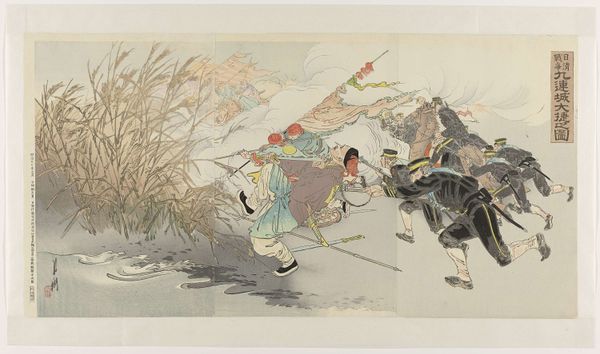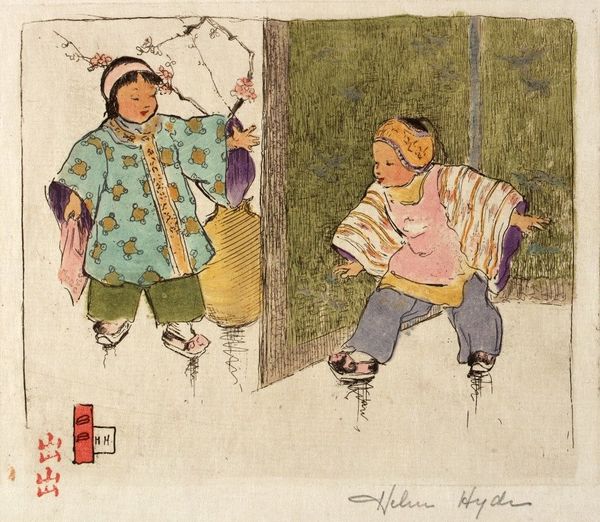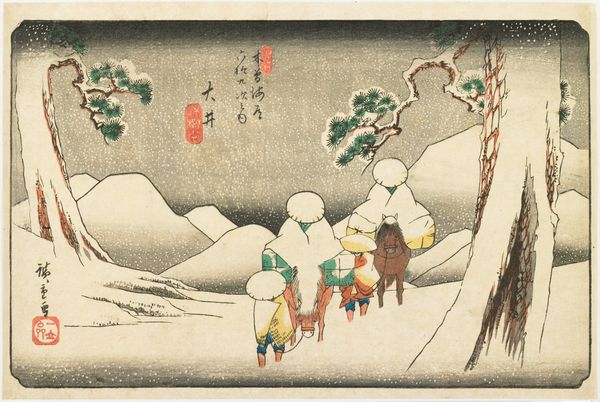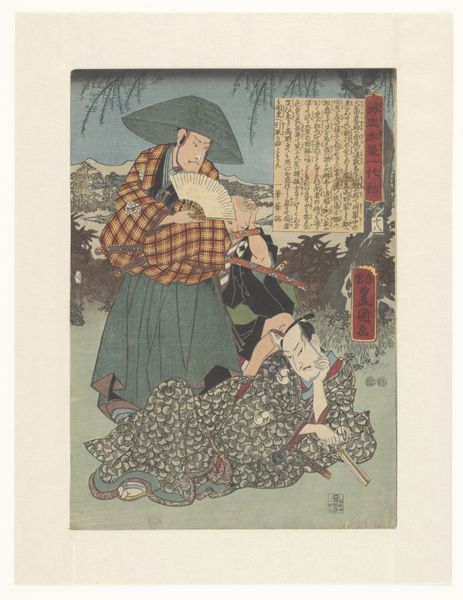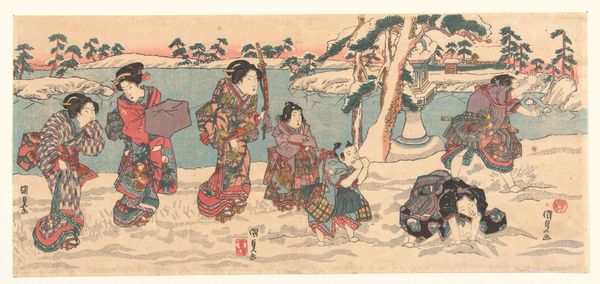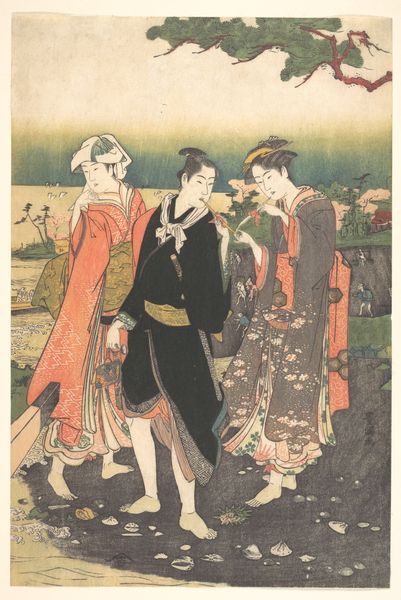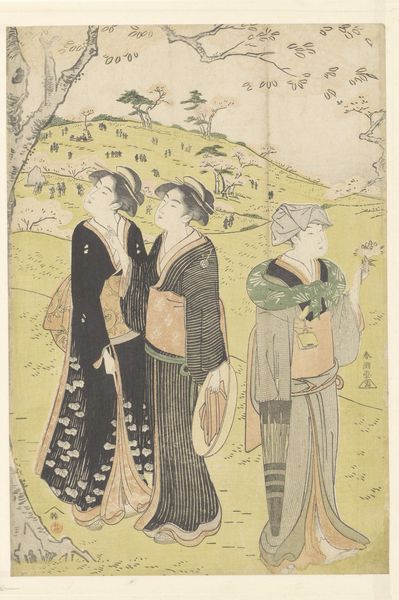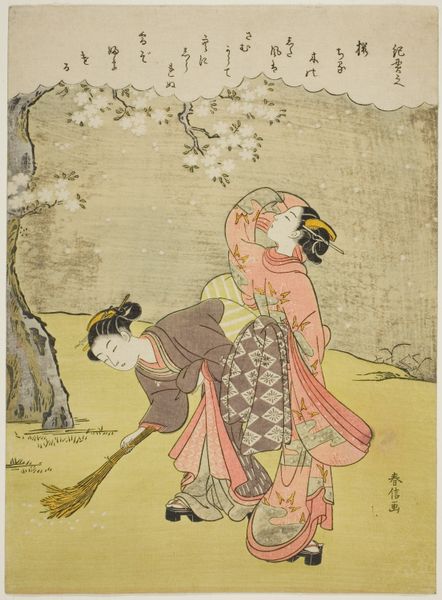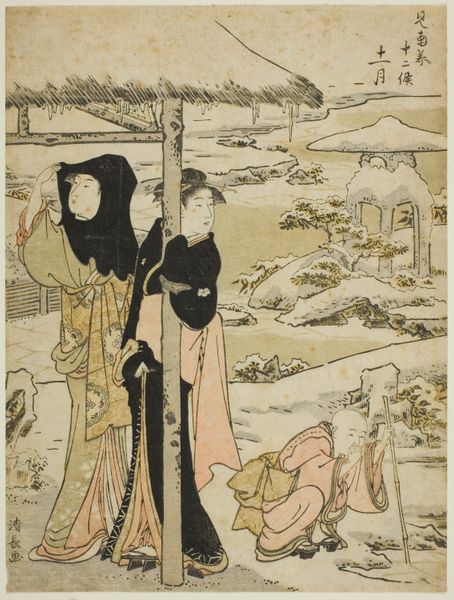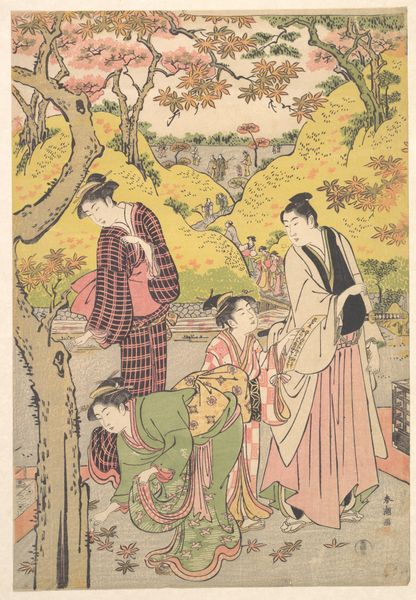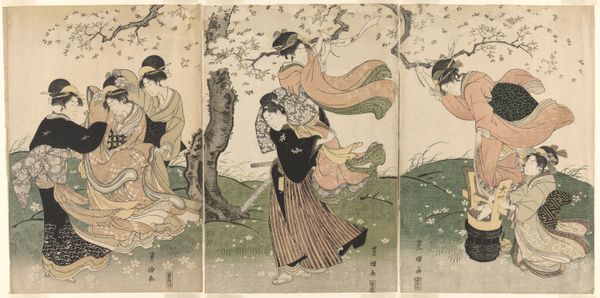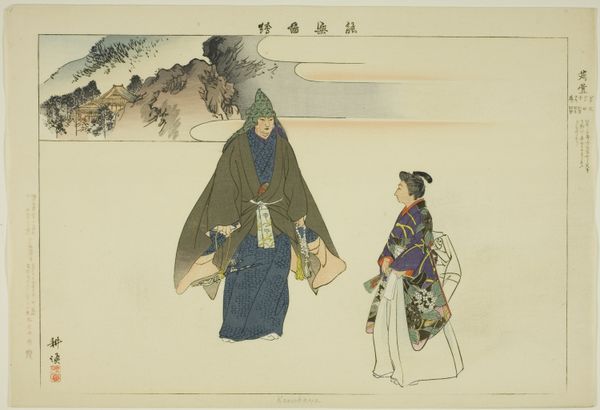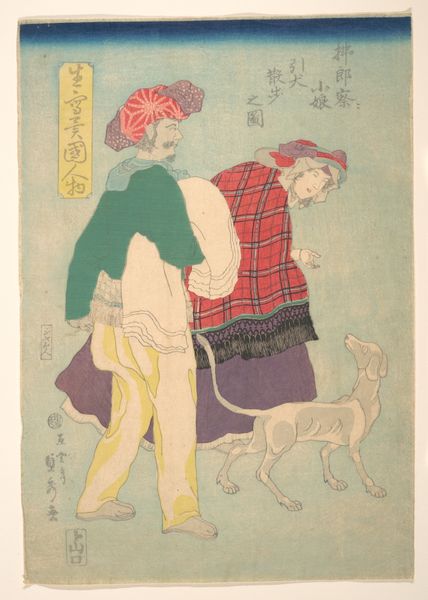
print, paper, woodblock-print
#
water colours
# print
#
asian-art
#
landscape
#
figuration
#
paper
#
coloured pencil
#
woodblock-print
#
underpainting
#
japonisme
#
mixed media
#
watercolor
Dimensions: 253 × 200 mm (image/plate); 331 × 241 mm (sheet)
Copyright: Public Domain
Editor: This mixed-media piece, "In the Snow at Tokyo" by Helen Hyde, created around 1900, has such a serene, wintry feel. The use of colour and the layering create this wonderful depth. What can you tell me about this work? Curator: From a materialist perspective, let’s look at the tangible realities shaping this print. Helen Hyde, an American artist, strategically chose printmaking—etching, drawing, coloured pencil, watercolor—as a mode of production. These materials were more accessible, and think about the implications for her intended audience, and also what adopting these Japanese techniques communicates. Editor: It's interesting to think about it that way, making the artwork accessible. I also noticed how Japonisme clearly influenced her, in choice of materials but also in composition and subject matter. Curator: Exactly. The ‘how’ becomes crucial. Consider the labor involved: the crafting of the woodblock, the application of each color, each process has roots in artisanal traditions but how does Hyde's labor complicate those traditions as a foreigner and a woman. It is also more than just consumption and accessibility, but circulation within an increasingly global art market. Editor: So, looking at the artwork is not enough, it is about questioning how the image comes to be? What that represents in artistic expression? Curator: Precisely! It's about unravelling the social context, labor, and economics interwoven into the artwork's creation and consumption, challenging assumptions about 'high' and 'low' art forms and also the accessability to these mediums. Editor: This gives me a completely new lens to consider when viewing art. Curator: Indeed, shifting our focus from aesthetics alone allows a far deeper appreciation of the networks of material and human interactions shaping cultural production and dissemination.
Comments
No comments
Be the first to comment and join the conversation on the ultimate creative platform.
